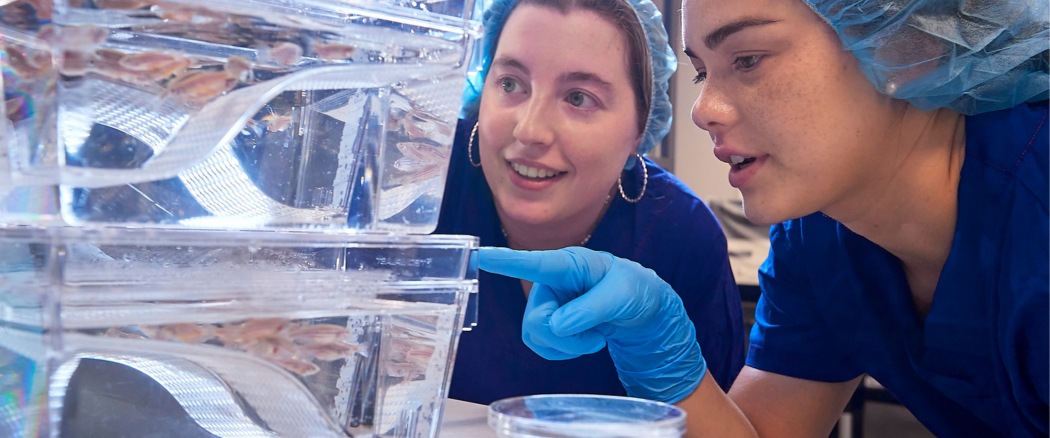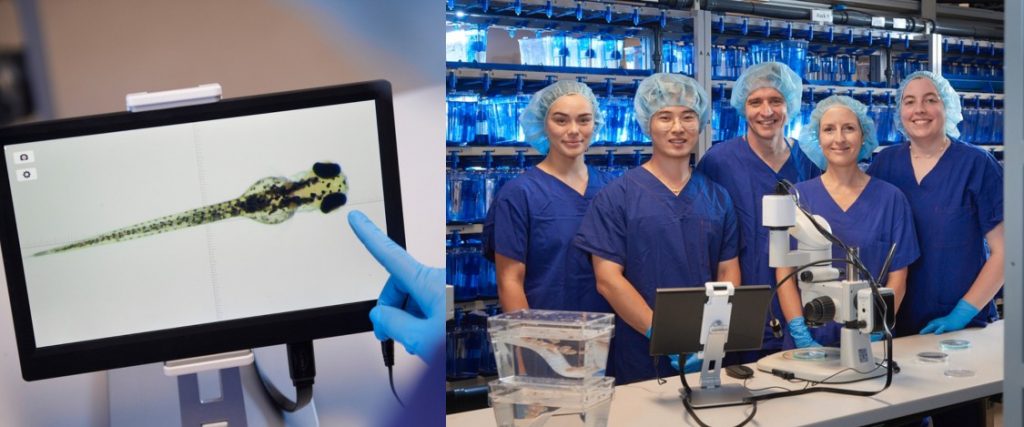
Perth Eye Foundation Grant
Project Title:
Establishing zebrafish morpholino as a model to study early-onset myopia
Chief Investigator:
Dr Jessica Mountford
Co-Investigators:
Dr Livia Carvalho, Dr Patricia Jusuf, Dr Antony Clark
Aim
To examine genetic and environmental causes of childhood myopia using zebrafish.
Methods
Selected human myopia associated genes were knocked down in zebrafish larvae, to study how gene mutations affect developmental eye growth and in particular, myopia.
Key results
We have established a rapid and reproducible platform for studying the effects of genetic mutation in the developing zebrafish larval eye. We have developed a method for imaging the larval eye using Optical Coherence Tomography (OCT) from as young as 3 days post fertilisation (dpf). We have identified the long-wavelength sensitive opsin as being a potential causative gene in the development of early-onset myopia and as a result, focusing our research on further elucidating the role of this gene in ongoing research.
Conclusion
We have established a rapid and reproducible platform for screening human myopia associated genes in zebrafish and highlighted a number of potential gene candidates.
Implications for Clinical Practice/Science and Future Research
Further studies involving this platform will help develop improved methods for screening children at risk of developing myopia and highlights potential gene candidates for gene therapy in the future. The next steps in this project involve generating knockout zebrafish lines of the genes highlighted from this project to further interrogate their role in the development in early-onset myopia.
Publications / Conferences
- 2023 Australian New Zealand Zebrafish Meeting Conference: “Zebrafish as a model of refractive error for studying early-onset”.
- 2023 (Under Review, for publication later in the year) Frontiers: “Comparison of visual systems in vertebrates to improve our understanding of myopia”.
- Further funding resulting from this project: WANMA ($100, 000).
Lay summary of outcomes
We have developed a screening platform using zebrafish as a model of childhood myopia. This platform enables us to study effects of both genetics and environmental factors such as outdoor activity and natural sunlight on the developing eye. By investigating such factors, we can develop improved methods to screen and treat myopia.
This project was sponsored by the Perth Eye Foundation
